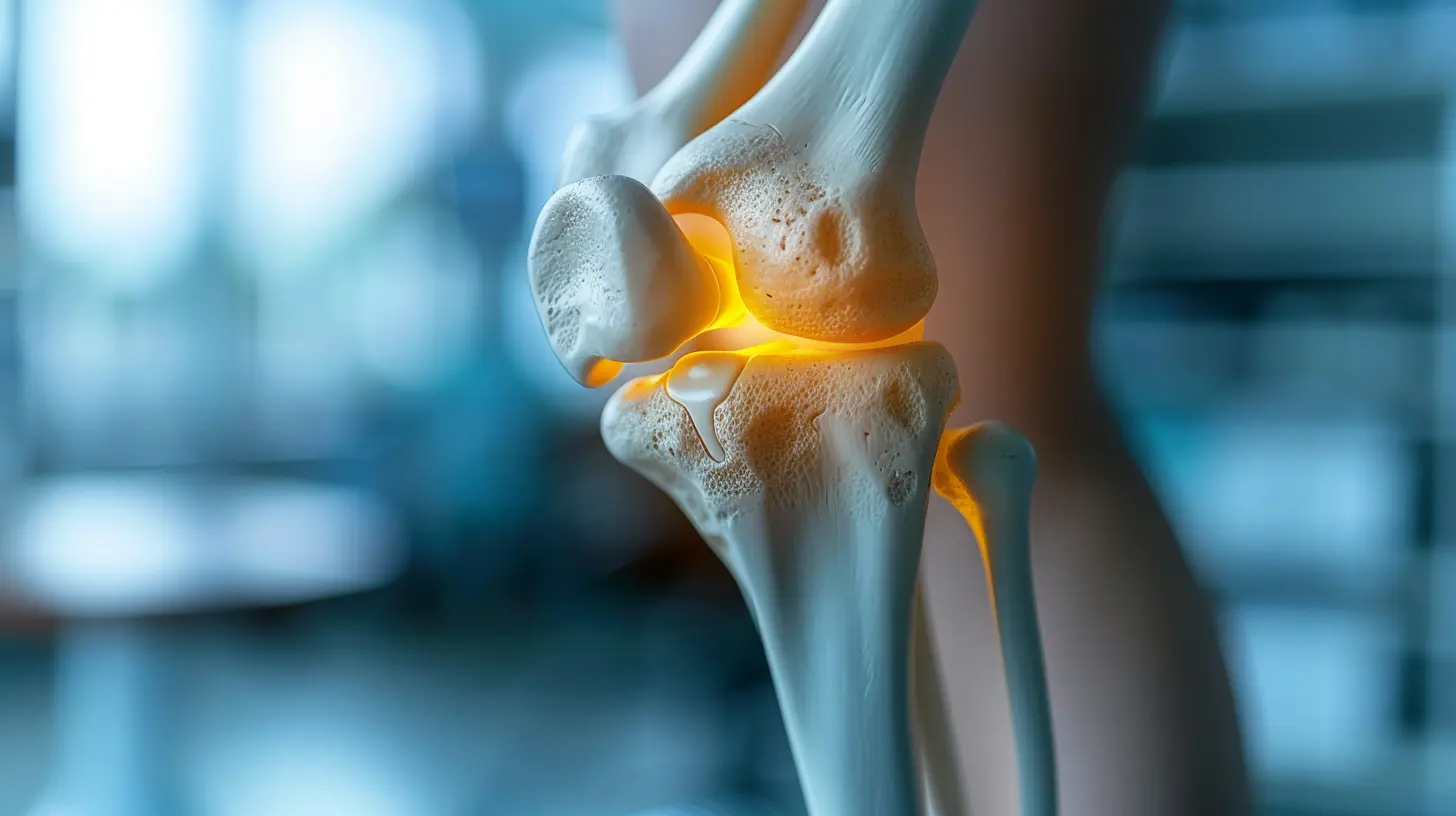Understanding the Role of Synovial Fluid in Joint Health
1 July 2025
Ever wondered what keeps your joints gliding smoothly like a well-oiled machine? You might not think about it much, but your body has its very own built-in lubricant—synovial fluid. This slippery substance plays a silent, behind-the-scenes role in how you move, bend, twist, and stretch every single day.
Let’s take a deep dive into what synovial fluid actually does, why it’s so crucial to your joint health, and what happens when things go wrong. Whether you're dealing with joint pain or just curious about how your body works, this guide is for you.
What Is Synovial Fluid, Anyway?
Alright, let’s start with the basics. Synovial fluid is a thick, gel-like liquid that’s found in your joints—specifically inside the synovial capsule, which surrounds most of your body’s movable joints like the knees, shoulders, hips, and fingers.Think of it as your body’s natural version of motor oil. When it’s in good condition, your joints move smoothly and without pain. If it breaks down, things get creaky and uncomfortable—just like an engine running without enough oil.
But it’s not just about lubrication. This fluid is packed with nutrients and immune cells that help nourish and protect the joint, while also reducing friction and cushioning the bones.
Why Your Joints Need Synovial Fluid
The role of synovial fluid goes way beyond just "greasing the wheels." Here's what it really does inside your joints:1. Reduces Friction
Let’s face it—bones aren’t exactly soft and cuddly. When they rub against each other, ouch… that hurts. Synovial fluid creates a super-smooth surface between the cartilage-covered ends of bones. This dramatically cuts down on friction.2. Acts Like A Shock Absorber
Ever jumped off a step or landed hard during a workout? Synovial fluid helps absorb some of that impact. It distributes the forces that go through your joints, sparing them from too much wear and tear.3. Delivers Nutrients to Cartilage
Here’s something cool—your cartilage doesn’t have its own blood supply. Yep, it’s avascular. So how does it get nutrients? Through diffusion with synovial fluid! This fluid carries oxygen and nutrients right to the cartilage cells.4. Removes Waste Products
Just like any other living tissue, cartilage produces waste. Synovial fluid helps flush out harmful by-products and keeps the joint space clean and healthy.
What Is Synovial Fluid Made Of?
This isn’t just any liquid. Synovial fluid is specially designed for the job. It’s made of:- Hyaluronic Acid: Gives the fluid its viscosity (thickness). It's like the jelly part—key for smooth motion.
- Lubricin: A glycoprotein that reduces friction. Think Teflon-like slickness.
- Water: The base that everything floats in.
- Proteins and Electrolytes: For nutrition and cellular function.
- White Blood Cells: To fight off bacteria or pathogens sneaking into the joint.
Each component plays a specific role in keeping your joints operating at peak performance.
What Happens When Synovial Fluid Goes Wrong?
Unfortunately, like everything else in the body, synovial fluid can get messed up. And when it does, your joints feel the consequences. Here are a few scenarios where things can go sideways:1. Osteoarthritis
In this wear-and-tear condition, the cartilage breaks down over time. The composition of synovial fluid changes, losing its viscosity and lubrication power. That leads to more friction—and yep, more pain.2. Rheumatoid Arthritis
This one’s an autoimmune issue. The immune system attacks the synovial membrane (which produces the fluid), causing swelling, pain, and joint destruction. The fluid gets inflamed and thickened, and that’s bad news for joint health.3. Infections (Septic Arthritis)
If bacteria make their way into the joint, the synovial fluid can become infected. The result? Intense pain, fever, swelling, and the risk of permanent joint damage if not treated ASAP.4. Gout
This condition causes uric acid crystals to form in the synovial fluid. Imagine tiny needles jabbing into your joint every time you move—yeah, not fun.How Can You Keep Your Synovial Fluid Healthy?
Now for the good stuff—what can you actually do to support your synovial fluid and, by extension, your joints?1. Stay Hydrated
This one’s easy but so important. Since synovial fluid is mostly water, drinking enough of it helps maintain its volume and cushioning effect.2. Get Moving
Movement stimulates the production and flow of synovial fluid. Think of it like stirring a pot—the more you move, the more evenly the nutrients get spread around your joint cartilage. Regular, low-impact exercise like walking, swimming, or cycling is perfect.3. Eat Joint-Friendly Foods
Fuel your joints with anti-inflammatory foods rich in omega-3 fatty acids (like salmon), antioxidants (berries, green tea), and vitamin C (oranges, broccoli) to support cartilage health.4. Watch Your Weight
Excess weight adds extra pressure on your joints, especially the knees and hips, which leads to faster breakdown of cartilage and synovial fluid dysfunction.5. Consider Supplements
- Glucosamine & Chondroitin: May help support cartilage structure.- Hyaluronic Acid: Some take it orally or via injection to boost joint lubrication.
- Omega-3 Fatty Acids: Fights inflammation in the joints.
Always chat with a healthcare professional before starting any new supplement routine.
Can You Improve Synovial Fluid With Exercise?
Absolutely! Your joints love when you keep them active. Physical movement helps:- Increase synovial fluid circulation
- Stimulate production of hyaluronic acid
- Improve the nutrient exchange between the fluid and cartilage
Even basic activities like stretching or walking help. To really get the benefit, make sure you're doing at least 30 minutes of moderate exercise most days. Yoga and swimming are especially great because they’re low-impact but get your joints moving.
What Does It Mean If You Have Too Much Synovial Fluid?
More isn’t always better. An excess of synovial fluid, a condition known as "joint effusion," can be a sign that something’s wrong. It might indicate inflammation, injury, or disease. Some common causes include:- Injury or trauma
- Gout or pseudogout
- Arthritis (Rheumatoid or Osteoarthritis)
- Infections
Symptoms can include swelling, stiffness, pain, and reduced range of motion. In some cases, doctors may need to drain the excess fluid and run tests to figure out what's going on.
When Should You Talk to a Doctor?
If your joints are consistently stiff, swollen, or painful, it’s time to get checked out. Changes in synovial fluid quality can signal underlying problems that need medical attention.Doctors often use joint aspiration (removing fluid from the joint with a needle) to diagnose joint diseases. They’ll look at the color, thickness, and contents of the synovial fluid to figure out what’s happening inside your joints.
Fun Fact: It’s Self-Regulating
Your body is kind of amazing. It can actually adjust how much synovial fluid it produces based on your activity level and joint health. Sedentary lifestyle? Your joints might not get the full nourishment they need. Active lifestyle? Your body keeps the supply running strong to meet the demand.The Bottom Line
Your joints are like precision instruments, relying on synovial fluid to keep everything running smoothly. It lubricates, nourishes, protects, and cushions—basically doing all the heavy lifting to ensure you stay mobile and pain-free.And guess what? You have a lot of control over how well it works. By staying hydrated, eating smart, moving your body, and keeping an eye on any signs of trouble, you’re giving your joints the best shot at staying healthy for the long haul.
So next time you stretch your arms, bend your knees, or roll your shoulders, take a moment to appreciate that slick, silent superhero working behind the scenes—synovial fluid.
all images in this post were generated using AI tools
Category:
Healthy JointsAuthor:

Laurie Barlow
Discussion
rate this article
1 comments
Axel Edwards
Synovial fluid: the unsung hero of joint health! Think of it as the ‘slippery sidekick’ that keeps our knees from creaking like an old door. Without it, we'd all be doing the 'robot' instead of dancing!
July 26, 2025 at 3:21 AM

Laurie Barlow
Absolutely! Synovial fluid is indeed essential for smooth joint movement, acting as a lubricant and shock absorber that keeps us moving with ease.


